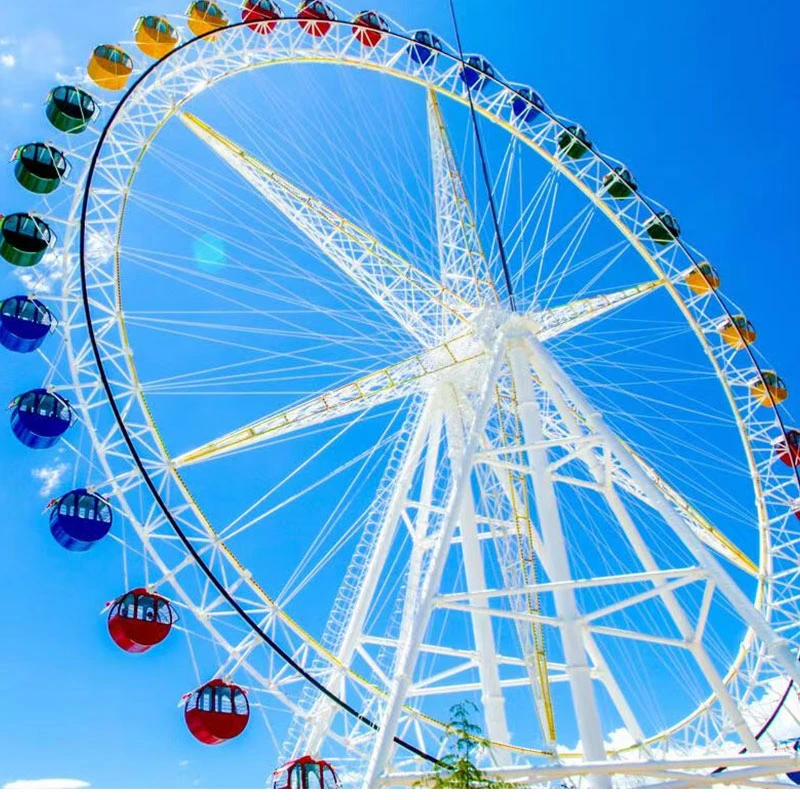- Albanian
- Arabic
- Belarusian
- Bengali
- Czech
- English
- French
- German
- Hebrew
- Hungarian
- Indonesian
- irish
- Italian
- Japanese
- kazakh
- Persian
- Russian
- Thai
- Uzbek
- Vietnamese
cost to buy a ferris wheel
The Cost to Buy a Ferris Wheel A Detailed Exploration
Buying a Ferris wheel is not just an investment; it’s a venture into the world of amusement and entertainment. These iconic rides are often associated with fairs, amusement parks, and festivals, drawing people in with their brightly colored lights and sweeping views. However, the journey to acquiring a Ferris wheel involves several considerations, from initial costs to maintenance and site requirements.
Initial Purchase Costs
The primary factor in the cost to buy a Ferris wheel is its size and capacity. Ferris wheels come in various sizes, from small mobile versions suitable for carnivals to large stationary structures used in major amusement parks. On average, the price for a small Ferris wheel can range from $50,000 to $150,000. In contrast, a large, intricate Ferris wheel with a capacity for hundreds of riders, such as those found in amusement parks, can cost several million dollars—sometimes upwards of $15 million.
Installation and Site Preparation
Once the Ferris wheel is purchased, installation costs must also be considered. These costs can significantly add to the overall budget. It generally involves site preparation, which includes leveling the ground, laying foundations, and ensuring that all safety regulations are met. Depending on the location and complexity of the installation, these costs can range from $20,000 to over $100,000.
Transportation and Logistics
cost to buy a ferris wheel

Transporting a Ferris wheel can be an intricate process. For larger Ferris wheels, this may involve disassembling them into parts and using specialized transportation methods to deliver them to the site. The costs associated with transportation can vary widely based on distance and logistics but can easily add another $10,000 to $50,000 to the overall investment.
Ongoing Maintenance and Operation Costs
Maintenance is a crucial consideration when exploring the cost to buy a Ferris wheel. Like any amusement attraction, regular maintenance checks, inspections, and repairs are necessary to ensure safety and optimal functionality. Maintenance costs can average about 10%-15% of the initial investment annually. Additionally, insurance, staffing, marketing, and utilities further contribute to the ongoing expenses involved in operating a Ferris wheel. This could mean budgeting an additional $30,000 to $100,000 annually, depending on your operational scale and location.
Revenue Potential
While the costs to buy and operate a Ferris wheel can be considerable, the potential revenue generated can also be significant. Ticket prices for rides typically range from $5 to $10 per person. If a Ferris wheel has a capacity of 24 riders and operates 12 hours a day, on a busy day, it could potentially bring in thousands of dollars in revenue. Thus, for someone looking to invest, the long-term revenue can justify the initial and ongoing costs.
Conclusion
Investing in a Ferris wheel involves a significant financial commitment, but it also has the potential to be a lucrative business venture. From initial purchase and installation costs to ongoing maintenance and operation, understanding the complete financial layout is crucial. With careful planning and management, a Ferris wheel can become not just a stunning attraction but a profitable enterprise, delighting visitors and creating unforgettable experiences for years to come.
-
Flume Ride-Hebei Zhipao Amusement Equipment Manufacturing Co., Ltd.|Thrilling Water Attraction&NIST Safety StandardsAug.01,2025
-
Double Ferris Wheel Sale | Premium Custom RidesJul.31,2025
-
Flume Ride-Hebei Zhipao|Water-Based Attraction, Safety Standards, High-Speed DescentJul.31,2025
-
Flume Ride: Thrilling Water-Based Adventure & Advanced Engineering - Hebei ZhipaoJul.31,2025
-
Flume Ride-Hebei Zhipao Amusement Equipment Manufacturing Co., Ltd.|Thrilling Water Attraction&Customizable DesignJul.30,2025
-
Flume Ride - Hebei Zhipao Amusement Equipment | Water Coaster, Thrilling DescentJul.30,2025
